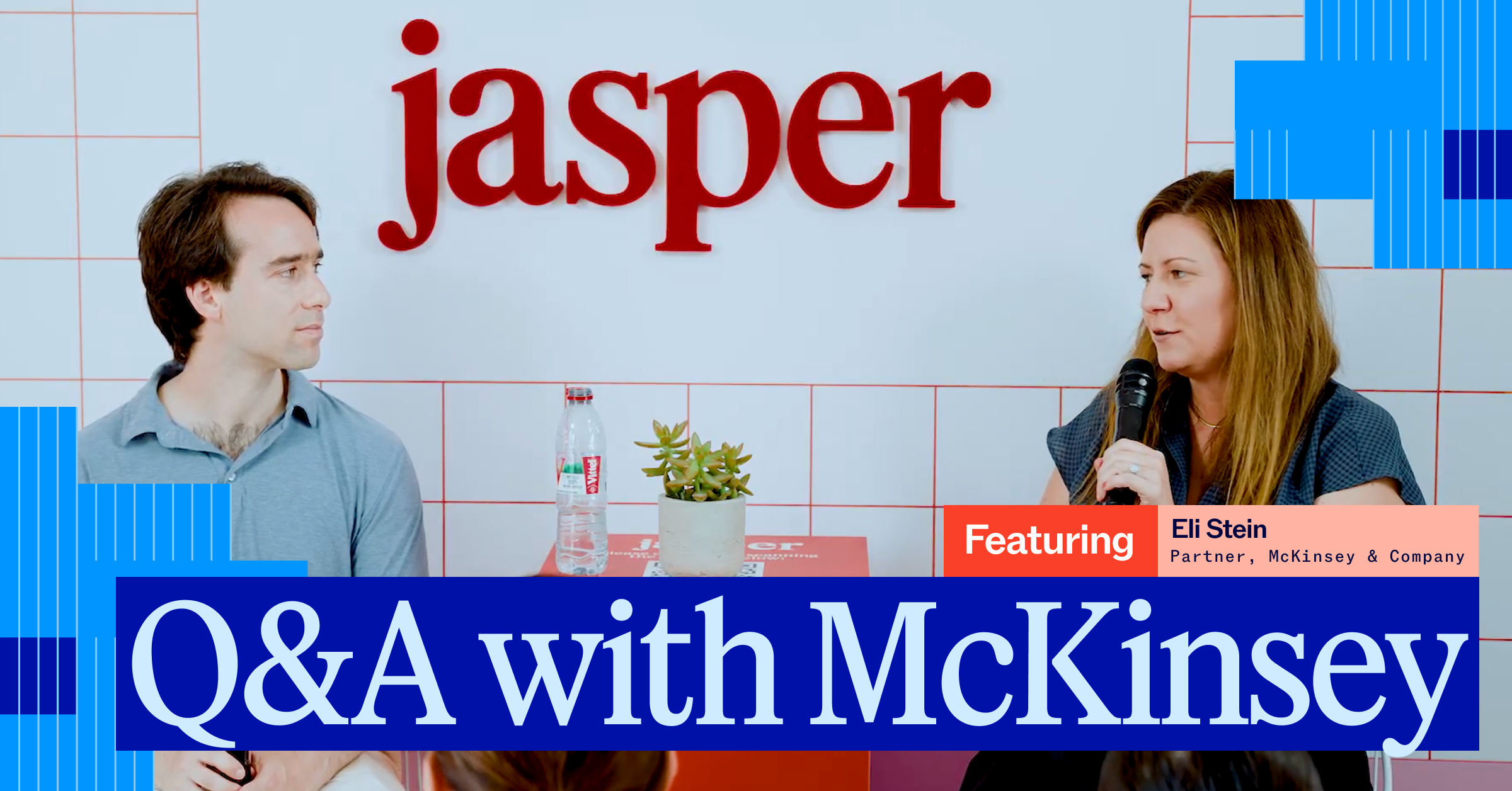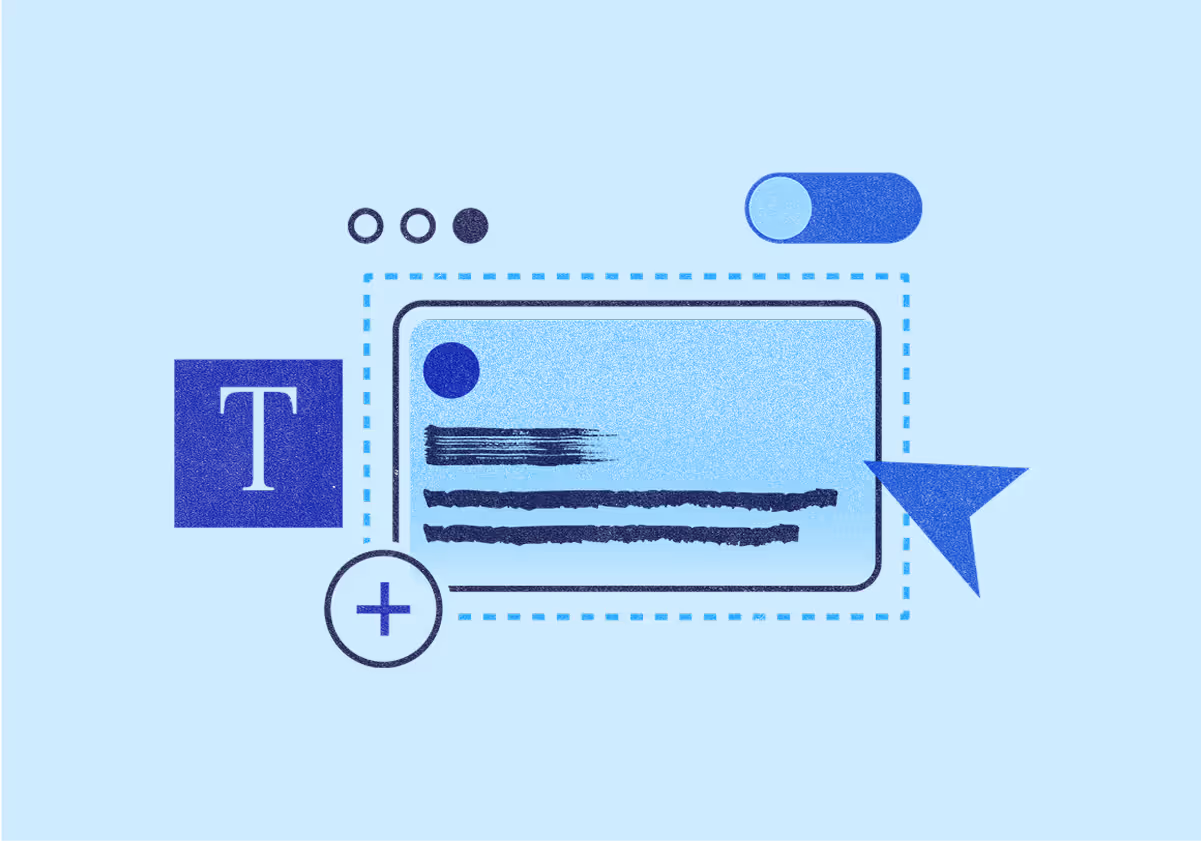Megan Dubin
August 4, 2025
McKinsey on the Future of Personalization
Eli Stein, Partner at McKinsey, breaks down why true personalization was stuck in “Mad Libs” mode, how AI shifts the paradigm, and what it takes to build full‑journey personalization at scale.

Personalization has been a priority for marketers for years, but most efforts have felt like filling blanks in a script—impressive in scale, but often lacking in substance. Now, AI offers marketers a chance to deliver context‑rich and emotionally resonant experiences at scale.
Still, success hinges on more than technology. It requires deep audience insight, workflow redesign from the ground up, and ongoing cross‑functional collaboration. At this year’s Cannes Lions Festival, Jasper CMO Loreal Lynch talked with Eli Stein, Partner at McKinsey, who works specifically with CMOs on growth topics driven by data, about how leading companies are achieving this. They discussed:
- Why AI transforms personalization beyond “stuff you’d like” recommendations
- Pillars companies must master to move from pilots to programmatic personalization
- Real‑world examples that foreshadow the next frontier of context‑aware marketing
Here’s an excerpt of the conversation.
Personalization isn’t new, but it’s having a moment with the rise of AI. What makes this AI‑fueled moment different?
Eli: I think of personalization over the past ten years or so as Mad Libs. And that's been tremendously effective in some cases. Think about recommended movies, products, etcetera, where the more specific you can get something, the better. And that's really where machine learning and discriminative AI have been very helpful.
At the same time, it's almost depersonalized in a way. If you think about all the things that we try to do as marketers—be inspiring, be educational, make someone's life more convenient—the “Mad Libs" approach has taken away from that. AI enables you to create content at a scale and still be inspiring, relevant, and educational vs. just filling in the blanks.
That's what I think the next horizon of personalization will be, using AI to fulfill the promise of all we wanted ten years ago when we started to really personalize.
Scaling personalization is not just creating more content, but making it truly resonant. How do you ensure personalized content truly connects?
Eli: I think where some folks have gone wrong with AI is being thrilled by the capabilities to produce at scale. But in some ways, it’s the tail wagging the dog in personalization. Meaningful personalization requires understanding your audience and microsegments. You have to understand the data triggers to find the right moments to respond to them. And then, of course, you have to be able to produce at scale. That’s the part unlocked by AI.
Without understanding and prioritizing audiences and evaluating the contextual data that can help unlock the moments where they're influenceable, then you're just not able to reach full ROI potential with your content.
Jasper’s State of AI in Marketing research has found the majority of marketers are still using AI in very ad hoc ways. How do organizations move past that to full AI-driven workflows?
Eli: Deploying AI longitudinally throughout the journey is really the unlock for companies that have delivered value at scale. For folks deploying AI at point use cases, we've seen single digit cost savings or some growth from personalization, but nothing more. When we see companies that are really successful, they're doing four things: rethinking the workflow, rethinking roles, making AI interoperable, and building capabilities.
The workflow changes with AI. If you just put AI in your existing workflow, you’ll go no faster or only marginally faster than if you didn’t have AI in the first place. The same steps will slow down the gears. It’s a paradigm shift, going from thinking of AI as a cool new tool to thinking of it as catalyzing a new era of marketing.
What are your best practices to build AI workflows from the ground up?
Eli: First is to have a strong understanding of your current workflow and how it happens today. Then, you reimagine what your workflow could be, and that should be a derivative of the type of marketing you want to do.
For instance, if you're sending millions of weekly emails with highly personalized, ML-based recommendations, you’ll have a much different workflow than a company focused on mid-funnel social media activations. You have to know what your specific goals are. Then, you reimagine your workflow from the bottom up.
Consumer expectations and economic pressures are always evolving, and drive urgency within organizations to think of personalization as more than a nice-to-have. What do you think about personalization as a differentiator?
Eli: I think for a long time, personalization has kind of been the sprinkles on the ice cream. The ketchup on the burger. Whatever your analogy is. The point is that personalization has really not been a tool to increase relevance and authenticity largely because the costs of producing content at that scale were prohibitive.
Now I think we are in an era where personalization can increase the relevance and authenticity of how you connect with consumers if you start with an audience and data lens.
Our research shows that 75% of customers are turned off by content that doesn't seem relevant to them, and the bar for that relevance will keep increasing. And when I talk to marketing leaders, particularly CMOs, and hear about the value drivers that they’re anchoring on—brand, revenue, growth, efficiency—I think personalization can help with all of them.
This is just a preview of the conversation with Eli Stein on AI Meets Personalization. Watch it now to unlock the full playbook.
More of the latest & greatest

Gemini 3 Pro in 24 Hours: Inside Jasper’s LLM-Optimized Architecture
How does Jasper validate new AI models like Gemini 3 Pro in under 24 hours? Inside our rigorous 3-step testing process for enterprise marketing.
December 4, 2025
|
Nick Hough

3 Predictions for AI in Marketing in 2026
In 2026, AI will rewire teams, streamline tooling, and turn content into a competitive engine.
December 2, 2025
|
Loreal Lynch
.png)
Highlights from Jasper Assembly: Scaling Content with Confidence
Discover key insights from Jasper Assembly 2025. Leaders from Sanofi, NetApp, U.S. Bank, and BCG shared AI marketing strategies for scaling content and driving impact.
November 19, 2025
|
Loreal Lynch













